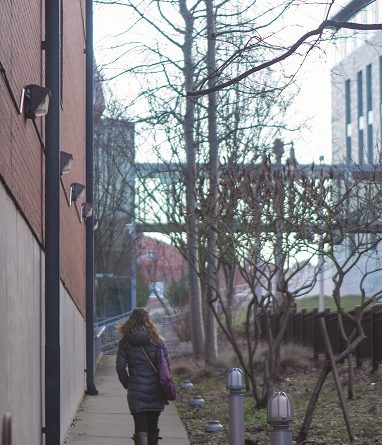EDITORIAL: Guns in the wrong hands
By Russ Davis
If you’ve been following my columns with The Ledger, I have two things to say. First, thank you. Second, you’ll recall that a few months ago, I wrote about why, over the objections of an increasing number of pundits, politicians, and activists, I’d like to be armed with a gun. As a general rule, I would like to be able to protect myself with a firearm. But it occurred to me that I never explained why I’d like a gun on UWT’s campus. And the thing is, the area containing the UWT campus is probably the area where I most want a gun.
Okay, maybe it’s irresponsible for a Ledger columnist to say that UWT is an unsafe place. After all, who am I to say that? I have never been a victim of a crime here. I know most of the people in Campus Safety, and I know they work hard to keep UWT safe.
Maybe I have nothing to worry about. Maybe I’m just a sheltered suburbanite (I live in Puyallup and commute in to Tacoma) and I have a misguided view of downtown Tacoma. But there are times when I wonder. I’ve had classes late at night, and it’s usually a long walk from where my class is to where I’m parked. I suspect the same’s true for many on campus. Often, I’m forced to walk in areas that are poorly illuminated, and I usually pass people who look suspicious. Sometimes, I just think I’d feel safer if I had a gun under my coat.
I wouldn’t even have to fire. Often, just brandishing a gun convinces a potential attacker (for theft, physical assault, sexual assault, etc.) to flee. But unfortunately, it’s hard to quantify how many crimes have been stopped by guns. The best study done on the matter appears to be one conducted by Florida State University criminology professors Gary Kleck and Marc Gertz in the 1990s; they concluded that guns are used 2.5 million times a year in self-defense. Their figures are hotly debated, and I suspect this is, at least in part, because few news outlets see the need to do stories on crimes that never occur.
As nebulous as the figures may be, I would rather be able to stop a crime than turn into a victim. This would be best done by being armed, and UWT’s campus is no exception to that rule.
In 2007, in a location just 50 feet away from the campus police department’s office, University of Nevada student Amanda Collins was raped by serial rapist James Biela. Despite having a concealed carry permit, Collins did not have a gun on her person, as carrying firearms on college campuses violates Nevada law. As she told NRA News in February 2013, “I was legislated into being a victim.” Since her attack, Collins has traveled the country advocating for allowing concealed carry on campus.
Her message has yet to reach the University of Washington. Title 478 of the Washington Administrative Code (which covers regulations affecting the university) explicity prohibits carrying weapons on campus without written permission from the campus’s police department. The UWT Campus Safety website lists seven steps that must be taken for someone to obtain said permission. This is a process that involves not just Campus Safety, but also the Chancellor, multiple Vice Chancellors, and even includes the Attorney General’s Office.
I don’t know how long this process takes, but just looking at the list depresses me into thinking it’s not worth it. I have read, with great interest, the book “Emily Gets Her Gun,” written by Washington Times columnist Emily Miller, who details the arduous steps it took her to buy a gun. She frequently writes about how she was tempted to give up because of all the red tape; I suspect the same could be said for people who consider carrying a gun at UWT.
But one thing is for certain: These steps are not being followed by criminals, the very people we need to worry about. That’s why I’d urge UWT to reconsider it’s weapons policy before the wrong person inflicts damage.


